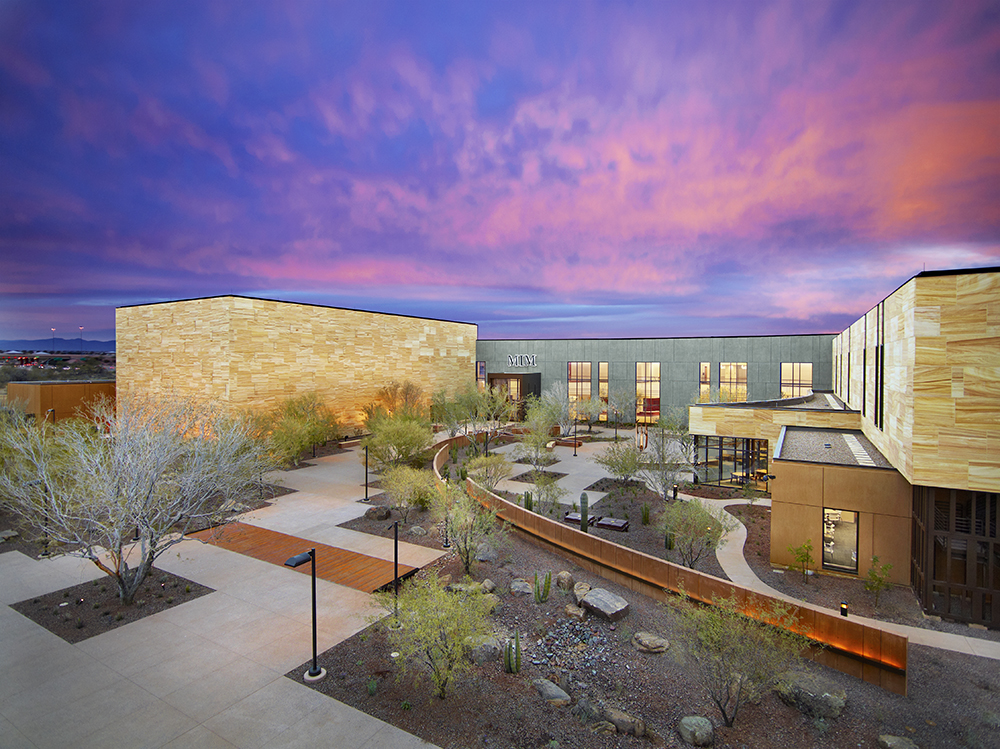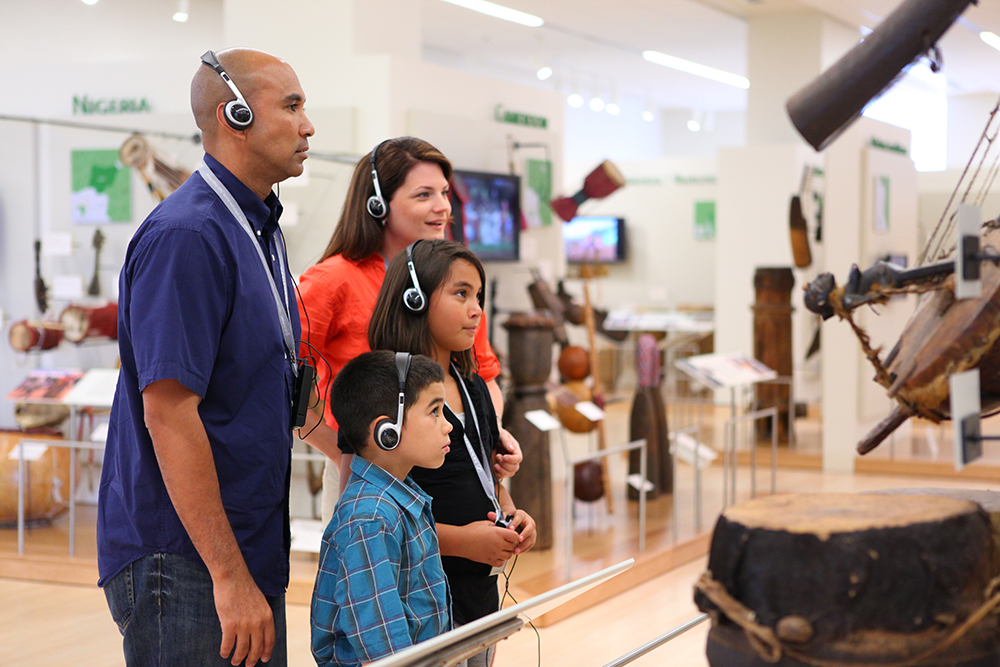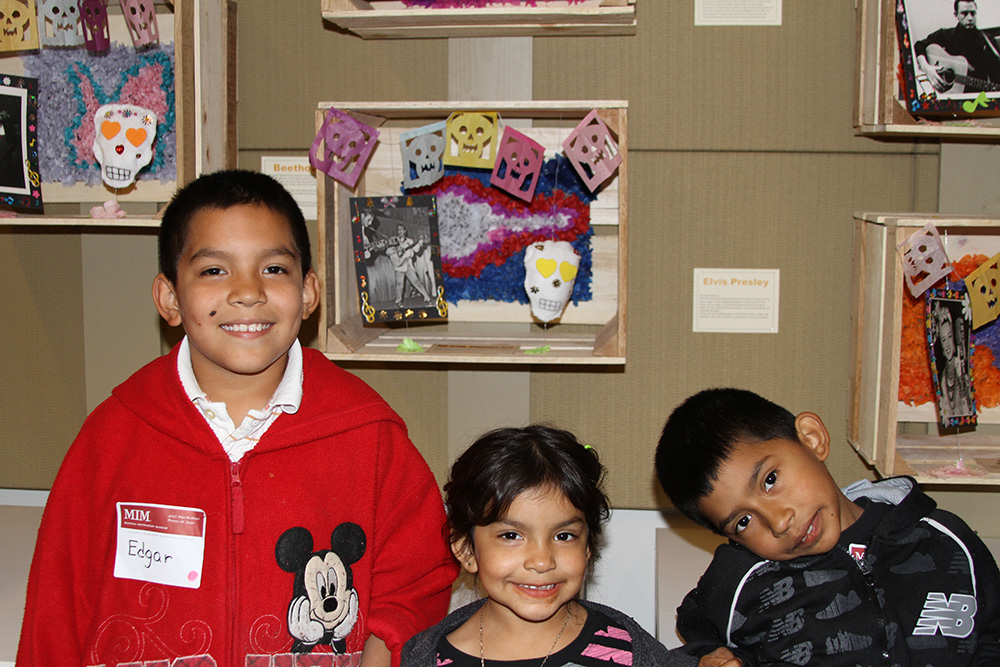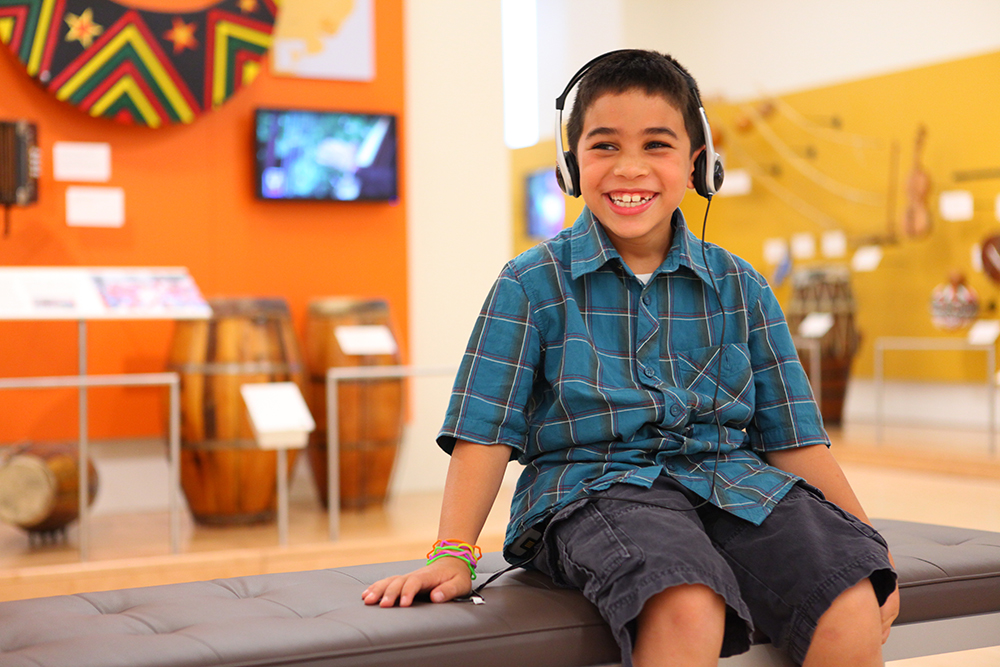
Musical Instrument Museum: Education is the Main Mission
By Stuart Isacoff
September 2, 2014
 From ancient German krumhorns to African thumbpianos to Eric Clapton’s Stratocaster, MIM lets students tour the world through music
From ancient German krumhorns to African thumbpianos to Eric Clapton’s Stratocaster, MIM lets students tour the world through music
 The Musical Instrument Museum is Arizona’s Number 1 attraction, according to TripAdvisor, which is remarkable considering it only opened in 2010. Since then, more than 350,000 people have come through its doors, more than 40% of whom have been students.
The Musical Instrument Museum is Arizona’s Number 1 attraction, according to TripAdvisor, which is remarkable considering it only opened in 2010. Since then, more than 350,000 people have come through its doors, more than 40% of whom have been students.“From the beginning,” founding President and Director Bill DeWalt told me, “I thought that we would develop educational programs here for the local school systems, and that we would eventually use that as a platform to expand to the world. We have the opportunity to develop curriculum to reach young people virtually everywhere.”
Since DeWalt retired in 2013, April Salomon has been acting director. But under the guidance of Education Director Carly Ofsthun, education remains a top priority, especially for the large number of schools in the area that are supported under the Title 1 Federal Aid program for at-risk districts. (Most of MIM’s education initiatives are funded privately, however.)

Far from the usual wander through long corridors to look (but don’t touch!) at precious artifacts, MIM school tours are designed to be experiential. Apart from admiring and even trying out a few of the 6,000 instruments on display, students can see them in action—both in video stations within each exhibit and live. For some, a visit to MIM may be their first time witnessing a live performance (often on an instrument they’ve never heard of), either in the 300-seat theater or within the galleries themselves.
 MIM offers seven tours for school groups, from “Musical instruments and animal art of Asia” (Grades K-2), which looks for similarities between animal shapes and instruments, to “Experience Africa” (Grades 3-6), where students explore the African elements in music of the Americas. They participate in a West African percussion ensemble, and get to dance with special “gumboot” shoes. The dancing also ties in with school physical-education requirements.
MIM offers seven tours for school groups, from “Musical instruments and animal art of Asia” (Grades K-2), which looks for similarities between animal shapes and instruments, to “Experience Africa” (Grades 3-6), where students explore the African elements in music of the Americas. They participate in a West African percussion ensemble, and get to dance with special “gumboot” shoes. The dancing also ties in with school physical-education requirements. - School-group tours. Since October of 2010, there have been 112,696 participants, of 1,711 school groups.
- Youth-group tours. Since January of 2013, there have been 1,818 participants.
Artists “in residence” at MIM have included the Chestnut Brass Company, a contemporary chamber music ensemble; Ghanian musician Bernard Woma; ballad singer Tim Eriksen; and classical pianist Alpin Hong. Some also participate in the concert series [see sidebar].
 Usually, an artist will offer a 50-minute performance followed by an annotated tour of his or her particular gallery or specialty area. By way of example, Hong uses the piano repertoire and popular music transcriptions to engage the students in a narrative about piano mechanics, what practicing involves, and how different intervals, tempos, and elements like stage presence affect the feelings evoked by music. Students are invited to ask questions. For many this may be their first time engaging in a dialogue with a professional musician.
Usually, an artist will offer a 50-minute performance followed by an annotated tour of his or her particular gallery or specialty area. By way of example, Hong uses the piano repertoire and popular music transcriptions to engage the students in a narrative about piano mechanics, what practicing involves, and how different intervals, tempos, and elements like stage presence affect the feelings evoked by music. Students are invited to ask questions. For many this may be their first time engaging in a dialogue with a professional musician.[The 299-seat MIM Musical Theater hosts performances by a wide variety of musicians]
In addition to individual artist talks and demonstrations there are also a number of themed, in-gallery presentations such as: “School of Swing,” for grades three to five, which focuses on the history of jazz; “Heidi Swedberg & the Sukey Jump Band,” designed to show off the ukulele’s many uses; and “Yellowhouse Dancers,” in the Navajo Nations area, which shares American Indian culture through song and dance.
MIMKids comprises two kinds of classes: “Mini Music Makers,” (for ages 0 to 5) and “Musical Adventures” (for ages 6-10). Both use the instruments in hands-on movement and music activities that are designed to teach social skills as well the history and uses of the instruments. In the 2013-14 school year, MIMKids reached 1,187 individuals.
This is a relatively new effort, a partnership in which Girl Scouts can earn a special merit badge for successfully completing training as official guides in MIM.
Student exhibitions
 These are designed to help give students a sense of “ownership” in MIM. In one partnership between MIM and a local school district, artwork by third- and fourth-graders was placed on display in a special exhibit area; the young artists and their families were then invited to an opening reception and concert.
These are designed to help give students a sense of “ownership” in MIM. In one partnership between MIM and a local school district, artwork by third- and fourth-graders was placed on display in a special exhibit area; the young artists and their families were then invited to an opening reception and concert.[Students from Herrera Elementary School at a reception for their art work exhibit.]
Education Director Ofsthen notes how these kinds of special evenings can reinforce the sense of the museum as a welcoming place. “Parents and kids began to talk about how MIM was ‘their’ museum,” she says. Which is precisely the goal.
MIM makes its curriculum and lesson plans available to any interested teacher.
 Measurable Impact
Measurable ImpactDuring the 2013-14 school year, 97% of teachers said that their students learned something new, and 92% would recommend a guided MIM school tour to their colleagues. 95% of middle- and high school students would recommend a field trip to MIM to other students.
One third-grade teacher was typical in her response: “My students and I had a spectacular educational experience.”
After only four years, education at MIM has established a strong foothold in the community, and the staff’s expansive vision promises even greater engagement in the years ahead.

Stuart Isacoff is an award-winning writer, pianist, composer, and lecturer. He is the author of a number of books, including A Natural History of the Piano (Knopf, 2011) and Temperament (Knopf/Vintage, 2003), and writes on the arts for The Wall Street Journal, among other publications.
Copyright © 2024, Musical America